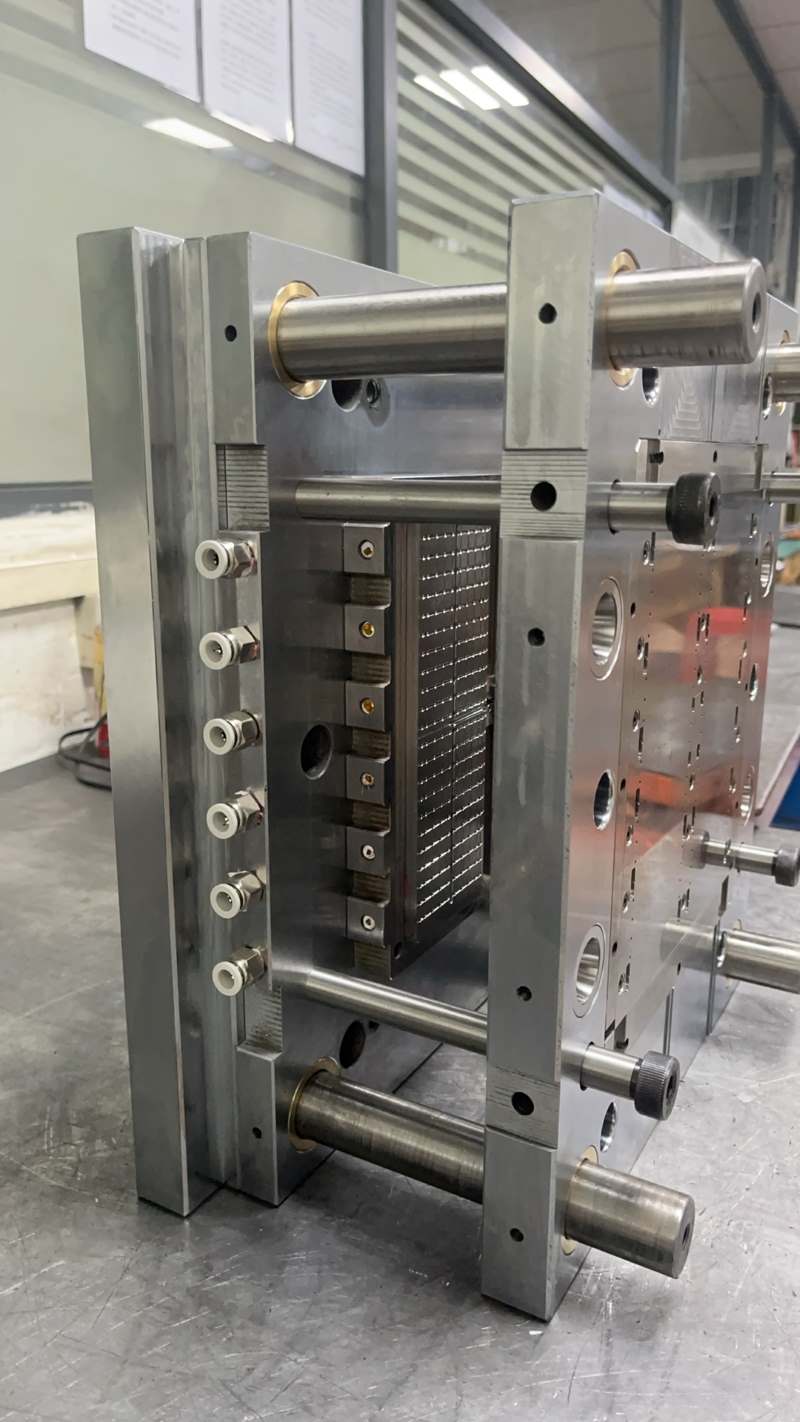Pin breakage is a common issue in injection mold manufacturing, which not only affects production efficiency but also increases maintenance costs. Here are the main causes of pin breakage and corresponding solutions:
I. Causes of Pin Breakage
Material Issues:
Poor-quality materials used for pins lack sufficient hardness and strength, making them prone to breaking.
Pins may experience annealing or fatigue failure in high-temperature environments.
Manufacturing and Assembly Issues:
Inaccurate machining of pin holes, with hole diameters being too large or too small, can lead to loose or tight pin assembly.
Poor concentricity between pin holes and the ejection plate holes, with offsets exceeding 1mm, can cause pins to jam or break.
Poor surface quality of pins, such as scratches or oxidation, can lead to crack formation.
Mold Design Issues:
Unreasonable pin hole design, such as sharp transitions or lack of stress-relief grooves at diameter changes.
Inappropriate fit between pins and the workpiece, resulting in excessive compressive forces on the pins during use.
Usage and Maintenance Issues:
Failure to regularly apply lubricating oil or pin oil increases friction between pins and pin holes.
Wear of pin holes allows material to enter, causing pin jams and subsequent breakage.
Excessive ejection speed and pressure beyond the mold's capacity.
Rapid product demolding with insufficient air intake at the bottom, creating negative pressure and increasing demolding resistance.
II. Solutions
Select High-Quality Materials:
Use high-quality materials for pins, such as those that have undergone heat treatment and surface nitriding.
Ensure pins have sufficient hardness and strength.
Improve Machining Accuracy:
Strictly control the machining accuracy of pin holes, with hole diameters 0.025-0.04mm larger than the pins to ensure smooth ejection.
Ensure good concentricity between pin holes and ejection plate holes, with offsets not exceeding 1mm.
Optimize Mold Design:
Use fillets or stress-relief grooves at diameter changes in pin holes.
Design appropriate fit between pins and workpieces to avoid excessive compressive forces.
Enhance Routine Maintenance:
Regularly apply lubricating oil or pin oil to reduce friction between pins and pin holes.
Regularly inspect wear on pin holes and clean any debris inside.
Set ejection speed and pressure reasonably to avoid exceeding the mold's capacity.
Increase air intake during product demolding to prevent negative pressure.
Use Pins Appropriately:
Ensure pins have no burrs on the front end and are polished where they contact the product.
Increase the number of pins to distribute ejection forces.
Add mold image protectors to monitor the production process in real-time.
By implementing these measures, pin breakage can be effectively reduced, improving production efficiency and reducing maintenance costs.

